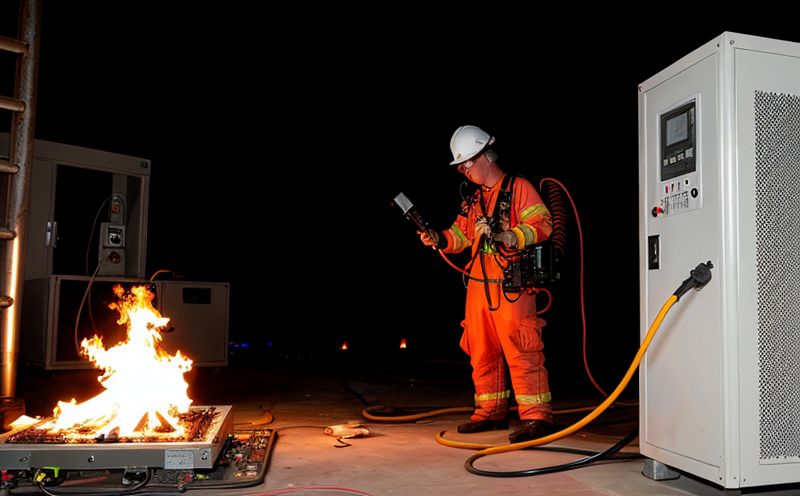Simulation of Electrical Fire Scenarios for Component Testing
The simulation of electrical fire scenarios is a critical aspect of ensuring the safety and reliability of electronic components used in high-risk environments. This testing ensures that devices can withstand potential ignition hazards without compromising on performance or integrity.
In sectors like aviation, healthcare, and transportation, where even minor failures could lead to catastrophic consequences, this service plays an indispensable role. It not only guarantees compliance with international standards such as IEC 60335-2-81 but also helps in identifying potential weaknesses early on.
The process involves subjecting the component to controlled conditions that mimic real-world fire scenarios. This includes exposure to high temperatures, flames, and other environmental factors that could potentially cause ignition or damage. By doing so, we can assess how well the component will perform under such extreme circumstances.
Our laboratory uses state-of-the-art equipment and techniques to conduct these tests accurately and consistently. The apparatus used includes specialized furnaces capable of reaching temperatures above 1000°C, flame generators that simulate actual fire behavior, and data logging systems to capture every detail of the test process.
The specimens are carefully prepared according to industry best practices before being placed into the testing environment. This preparation ensures that all variables related to the component's design are accounted for during the analysis phase. Once exposed to the simulated fires, we closely monitor various parameters including heat distribution, flame spread rate, and smoke production.
After each test run, detailed reports are generated summarizing our findings. These reports provide insights into both the strengths and limitations of the component tested. They serve as valuable tools for improving future designs or identifying areas where further development might be necessary.
To ensure accurate results across different types of materials and configurations, we employ rigorous quality assurance measures throughout every stage of the testing process. From initial setup through final analysis, each step is meticulously documented to maintain traceability.
- Customer Impact: Reduces risk of component failure during critical operations
- Safety Assurance: Ensures compliance with regulatory requirements
- Innovation Support: Provides data for product improvement and development
Quality and Reliability Assurance
Our commitment to quality does not stop at successful completion of the test runs. We also prioritize ongoing improvements in our methodologies based on feedback from clients and advancements within the field.
To maintain high standards, we regularly participate in proficiency testing programs organized by recognized bodies like AALL (Association for Laboratory Automation). Participation in these programs helps us stay current with best practices and ensures that our results are comparable across laboratories globally.
We employ experienced staff who undergo continuous training to keep abreast of latest trends and technologies. This dedication to professional development allows them to provide expert advice beyond just executing tests, contributing significantly towards overall project success.





